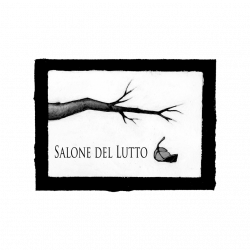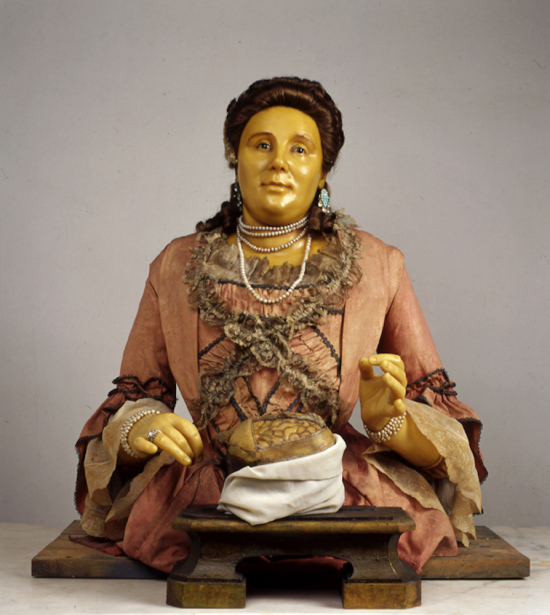Two are the anatomy lessons we are going to tell, as two are the genders: feminine and masculine. Two stories or rather two lives, two characters, two centuries and two towns: Mrs. Morandi Manzolini and Mr. Giacomini, who bluntly turned their profession into their own essence. Their lessons did not only take place in operating theatres or on morgue tables – à la Rembrandt, so to speak – they still take place nowadays in the display cabinets of two museums: the Museum of Palazzo Poggi (Institute of Anatomy) in Bologna and the Museum of Human Anatomy in Turin. These two museums were the homes of Anna and Carlo respectively and today they host their “specialities”. And much more. Anna, Mrs. Morandi Manzolini (1716–1774), was an artist, a wax modeller and a scientist. She proved that women, even in unfavourable times, can deal with culture in an eclectic and peculiar – in a word, crosswise – way. As it often happens, at the beginning she followed her husband’s footsteps and, as opportunities arose, she took care of setting up the former Institute of Science in Bologna and collaborated with the school of obstetrics both doing research and creating models about the development of the foetus during pregnancy. Her contemporaries said about her: “A woman of great beauty and intelligence deals with masculine strength with corpses and putrescent limbs in order to reproduce them and hand them down to posterity […] She has decorated her own home with parts of the human body, made with exquisite craft.”1 Her works and preparations talk about her: her approach combines a great rigour and a rare aesthetic sensibility. In her self-portrait, Anna is depicted as a great lady. She looks self-satisfied and extremely elegant in her dress adorned with lace, ribbons and strings of pearls. Her ring and earrings, as well as her hairstyle, tell the story of a woman who has reached an important position thanks to the love for her work. Looking so feminine and self-assured, she is immortalized in wax as she dissects a human brain! Mr. Carlo Giacomini (1840–1898) was the director of the Museum of Human Anatomy in Turin since 1876. Apart from a new layout and a renewal of the collections, he must be credited with the more than 800 human encephalons kept “dry”, which on the one hand testify to the great interest of the University of Turin in the functioning of our brain and on the other to Carlo’s great ability of conceiving and developing this drying process – of which he has even left us a recipe! We can’t help acknowledging that he was the very soul of the museum, and even more than that, since he wrote in his will: “As I am neither a supporter of cremation nor of graveyards, I prefer my bones and my brain to rest in the Institute of Anatomy where I spent the best years of my youth and to which I have devoted all my energy […].”2 And this is exactly what happened. That’s all from Sdl.
1. Zanotti, Francesco Maria. Commentarii (Istituto delle Scienze), III Tomo. De re Ostetricia, Bologna, 1755.
2. Giacomini, Carlo. Testamento del 22 giugno 1898, in Il Museo di Anatomia Umana Luigi Rolando, guida alla visita, a cura di G. Giacobini, C. Cilli, G. Malerba, Torino, 2008.

